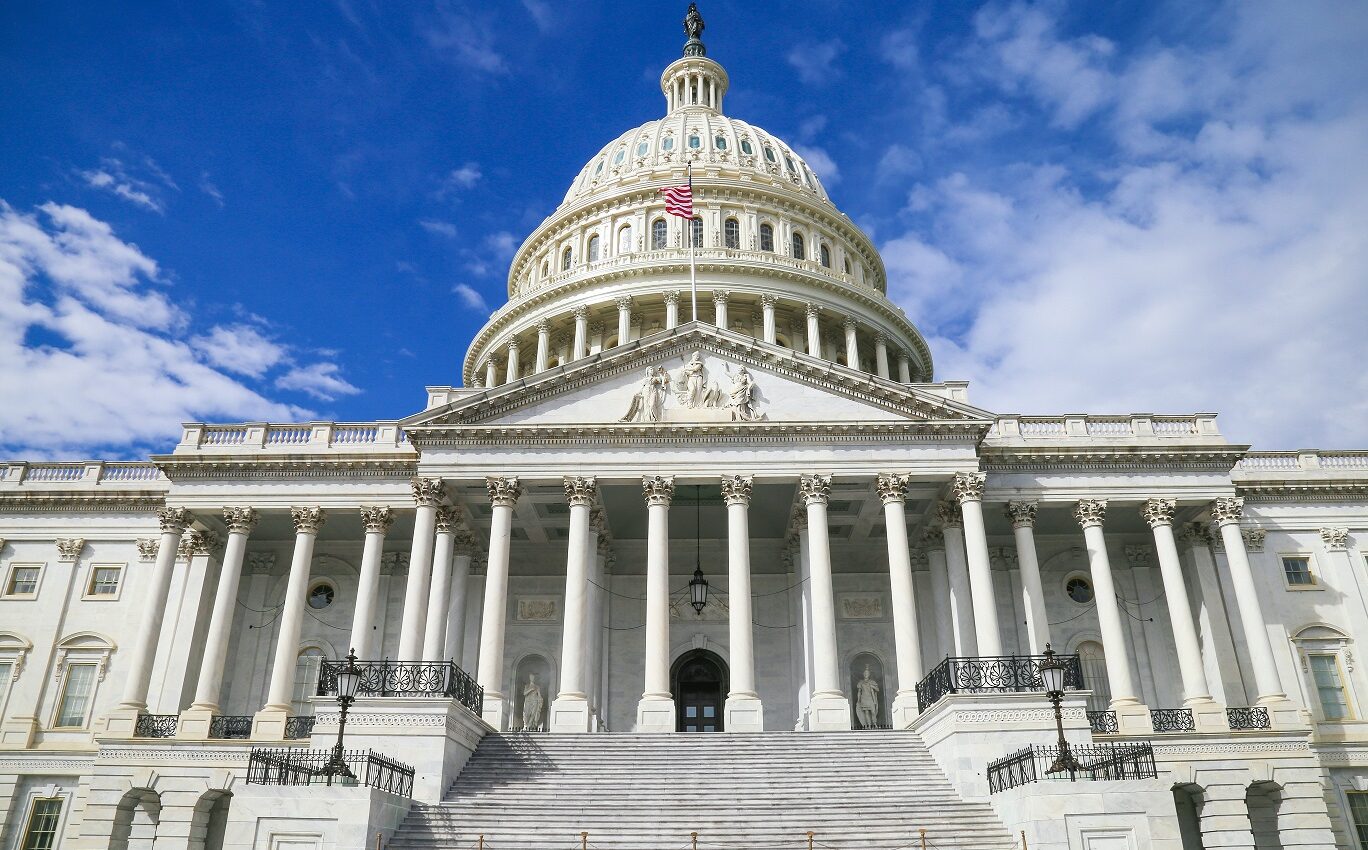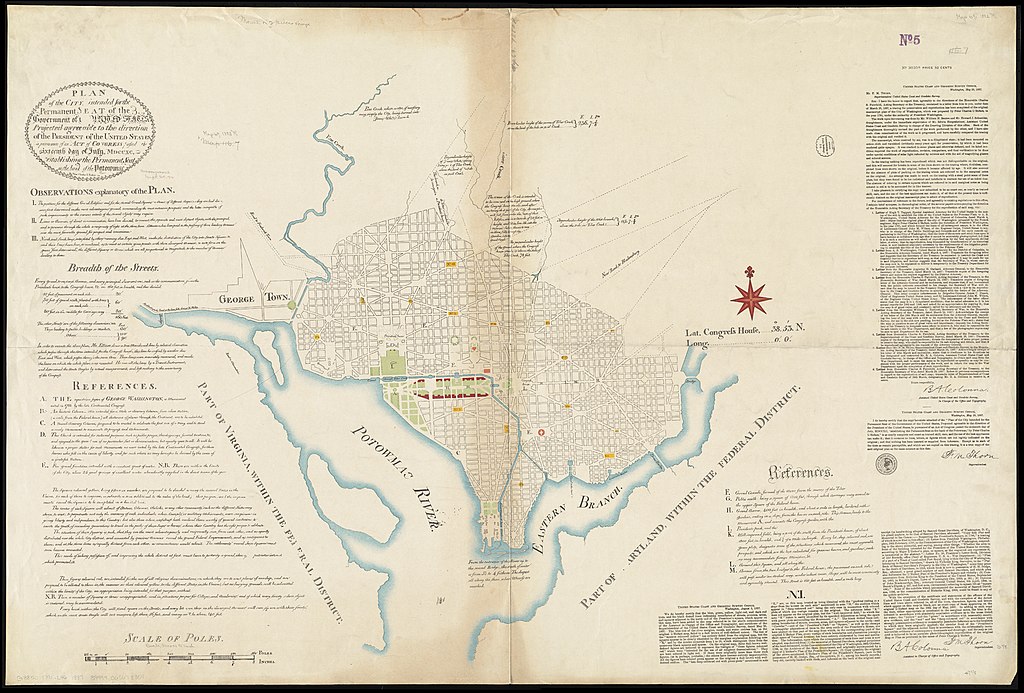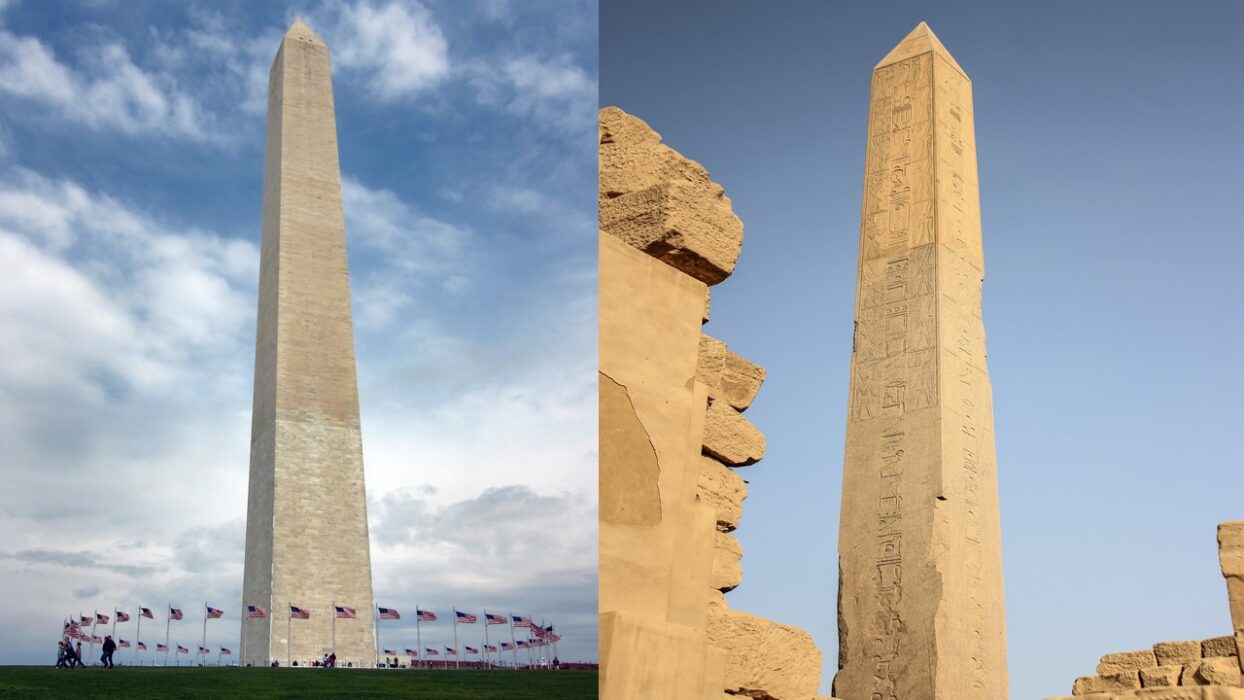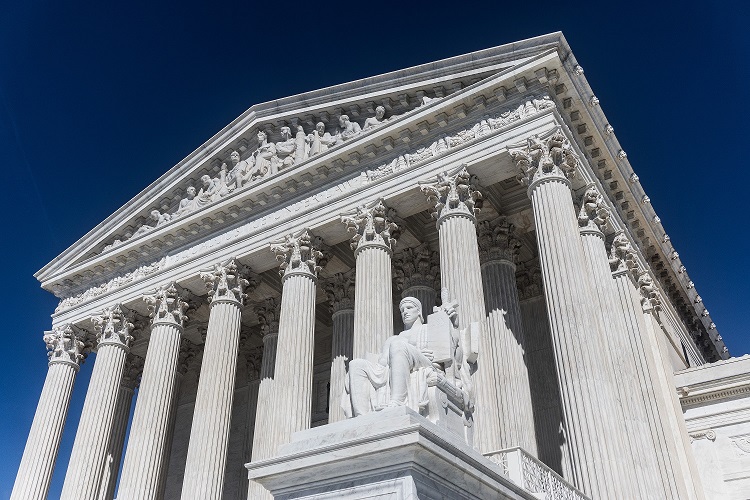“There is but one way for the moderns to become great, and perhaps unequalled … by imitating the ancients.” German historian Johann Winckelmann (1755)

Capitol Cornerstone Ceremony, 1793 (by Allyn Cox)
No one took this more to heart than Pierre L’Enfant. With Rome in mind, his design for Washington DC contained monumental buildings like the White House and the US Capitol connected by majestic boulevards. As symbols of the new state, representing democracy and power, these structures had to be center stage, much like the ancients had positioned their prominent buildings in carefully chosen locations. In this spirit, he designated the tallest hill in the District (known today as Capitol Hill*) as the place for US Congress to reside, which he described as a “pedestal awaiting a monument”. And although the ancients might have had other reasons to build higher up (safety from invaders or floods, or, in case of temples, being closer to the gods), it shows L’Enfant by design chose to symbolically connect the power and grandeur of the ancient civilizations with the aspirations of the new nation.
The ancient language of the US Capitol
A competition was organized to decide upon the design of the US Capitol. The requirements did not state that the building had to be Neoclassical, but the winning design was, not surprisingly, created along the lines of monumental ancient architecture: vaulted ceilings, a pedimented portico, Corinthian columns, and a dome in the style of the Pantheon in Rome.
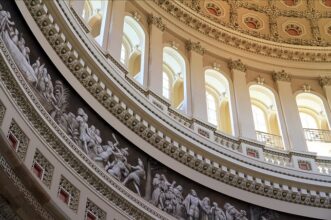
Rotunda frieze (Ingfbruno.,Wikimedia Commons)
The circular frieze inside the Dome (the Rotunda) also refers to ancient times. The panorama depicts 19 significant events in American history, like the landing of the Pilgrims, The Battle of Lexington and the Declaration of Independence. Just as the ancient Greeks used friezes on their buildings to display their culture, wealth, strength, beliefs and power, so did the Americans.
The same goes for the pediments above the entrances of the US Capitol. The Greek- or Roman-looking sculptures inside the triangle-shaped gables represent the Genius of America, the Apotheosis of Democracy and the Progress of Civilization. The tremendous effort to use the style and imagery of the ancients to express these ideas, shows that this was not just a matter of aesthetics or an expression of the international neoclassical fashion of that time. It tells the story of how the ideals of the once great civilizations are now carried forward by a new nation, by the people and for the people.

The genius of America pediment
Statue of ‘Freedom’
A wonderful ideal to be sure. But just as in the ancient world, democracy did not include everyone in America. Enslaved Black people, who were rented from their owners, were involved in almost every stage of building Washington DC, including the US Capitol. It must have been a bitter pill for Philip Reid, an enslaved African American, to work on the Statue of Freedom, a classical female figure partly based on the Roman goddess Minerva that tops the dome of the Capitol. The original design for the statue shows it with a liberty cap, which was provided to freed slaves in ancient Rome. It had been adopted as a symbol of liberty or freedom duri
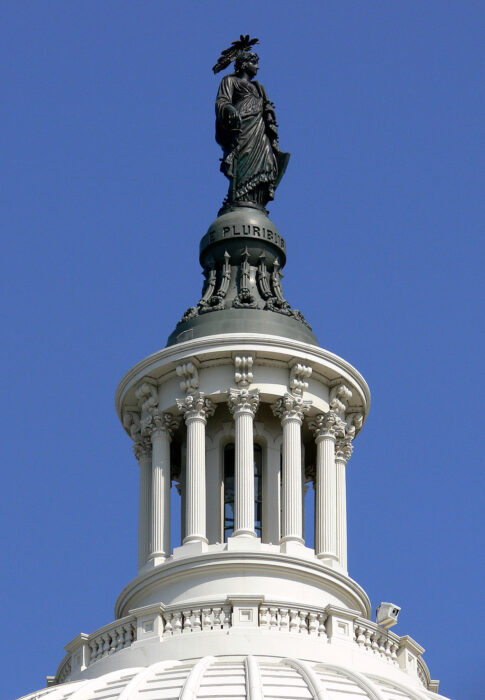
Statue of Freedom (by Andreas Praefcke)
ng the American Revolution. The then Secretary of War Jefferson Davis, in charge of the overall construction and who later became the president of the Confederacy, not surprisingly, resisted.
In 2012, Congress unveiled a marker to commemorate the important role played by laborers, in particular enslaved African Americans, in building the United States Capitol.
* Thomas Jefferson insisted the legislative building be called the Capitol rather than Congress House. It’s assumed to be named after Capitoline Hill in Rome, although the Roman Senate did not actually meet there.
Next week: Grandeur for the Greatest. In part 3 of this blog series, we’ll examine the Washington Monument and George Washington’s almost god-like status.
Mieke Bleeker works as event coordinator at the John Adams Institute. She holds a Master of Arts degree from the Vrije Universiteit Amsterdam, where she studied Ancient History. Her fascination for the history and politics of the United States inspires her to visit the country regularly. She has written other blog series for the John Adams, about John Brown’s attack on Harpers Ferry, and about the Pilgrim Fathers.
